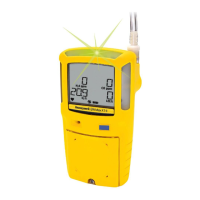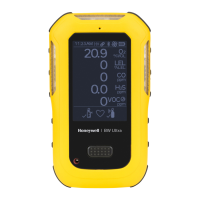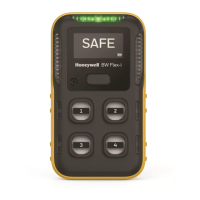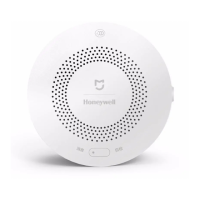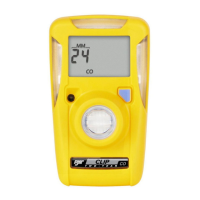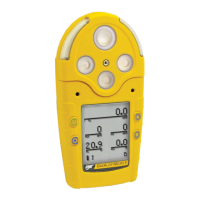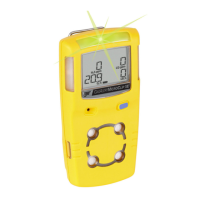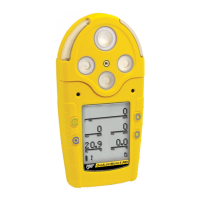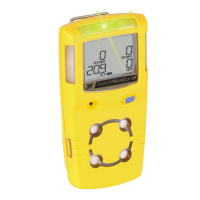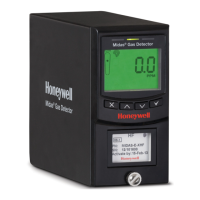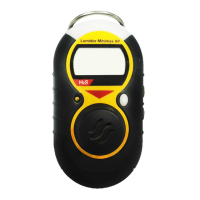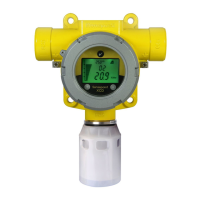Bump Test
The detector can be tested in four ways:
l Apply gas from a cylinder to the sensors manually through the calibration cap, and using the
detector's menu.
l Apply gas from a cylinder to the sensors manually through the calibration cap, and using the
Safety Suite Device Configurator (SSDC) software on a computer.
l Apply gas from a cylinder to the sensors manually through the calibration cap, and using the
Device Configurator (DC) app on a mobile device.
l Use an IntelliDoX module. For further reference see the IntelliDoX User Manual.
CAUTION
Move to a normal atmosphere (20.9% v/v O
2
) that is free of hazardous gas. Use 50% LEL for
test gas.
Details for Bump Test and maintenance:
l Recommendations for initial checking of the equipment on a routine basis including the
maximum time interval between calibrations.
l Perform a functional check with gas before each day of use.
l Honeywell recommends bump testing the sensors before each day’s use to confirm their
ability to respond to gas by exposing the apparatus to a gas concentration that exceeds the
alarm setpoints. Manually verify that the audible and visual alarms activate.
l The combustible sensor is factory calibrated to 50% LEL methane. If monitoring a different
combustible gas in the % LEL range, calibrate the sensor using the appropriate gas.
Bump Test via the menu
Apply gas from a cylinder to the sensors manually through the calibration cap, and using the
detector's menu.
1. Turn On the BW Icon. Place the cap over the detector, and then press down on both tabs to
snap it into place. Wait a few minutes to sensors warm up.
BW Icon 19 User Manual
www.CanarySense.com
Shop for Gas products online at:
1.888.610.7664
